- Home
- Danielle Steel
Against All Odds
Against All Odds Read online
Against All Odds is a work of fiction. Names, characters, places, and incidents are the products of the author’s imagination or are used fictitiously. Any resemblance to actual events, locales, or persons, living or dead, is entirely coincidental.
Copyright © 2017 by Danielle Steel
All rights reserved.
Published in the United States by Delacorte Press, an imprint of Random House, a division of Penguin Random House LLC, New York.
DELACORTE PRESS and the HOUSE colophon are registered trademarks of Penguin Random House LLC.
LIBRARY OF CONGRESS CATALOGING-IN-PUBLICATION DATA
Names: Steel, Danielle, author.
Title: Against all odds : a novel / Danielle Steel.
Description: New York : Delacorte Press. [2017]
Identifiers: LCCN 2016038271| ISBN 9781101883914 (hardback) | ISBN 9781101883921 (ebook)
Subjects: LCSH: Domestic fiction. | BISAC: FICTION / Contemporary Women. | FICTION / Sagas. | FICTION / Romance / Contemporary.
Classification: LCC PS3569.T33828 A72 2017 | DDC 813/.54—dc23 LC record available at https://lccn.loc.gov/2016038271
Ebook ISBN 9781101883921
randomhousebooks.com
Book design by Virginia Norey, adapted for ebook
Cover design: Misa Erder
Cover images: © Dana Gallagher /Offset (main photograph), © Niki Mareschal/Getty Images (babies), © David Lees/Getty Images (girls on jetty, couple on jetty), © Hans Neleman/Getty Images (bride), © svetikd/Getty Images (men holding hands), © Jayne Szekely/Arcangel (baby shoes)
v4.1
ep
Contents
Cover
Title Page
Copyright
Epigraph
Chapter 1
Chapter 2
Chapter 3
Chapter 4
Chapter 5
Chapter 6
Chapter 7
Chapter 8
Chapter 9
Chapter 10
Chapter 11
Chapter 12
Chapter 13
Chapter 14
Chapter 15
Chapter 16
Chapter 17
Chapter 18
Chapter 19
Chapter 20
Chapter 21
Chapter 22
Chapter 23
Chapter 24
Dedication
By Danielle Steel
About the Author
If Ever There Is Tomorrow
If ever there is tomorrow when we’re not together,
there’s something you must remember:
You’re braver than you believe,
and stronger than you seem,
and smarter than you think.
But the most important thing is, even if we’re apart,
I’ll always be with you.
—from Pooh’s Grand Adventure, Walt Disney Pictures
Chapter 1
On a hot sunny day in June, Kate Madison drove her ten-year-old Mercedes station wagon through Greenwich, Connecticut, until she reached Mead Point Drive, and followed the directions she’d been given until she arrived at tall iron gates. She pressed a buzzer and said her name when a male voice answered. A moment later the gates swung open, and she drove slowly onto the property. The grounds and gardens were impressive and there were beautiful old trees lining the driveway. She had been in the area many times before, though never to this particular estate. The woman who had owned it was a well-known society figure who had only stopped going out shortly before she died, at ninety-two. Before that, she had been one of the grande dames of New York society, a generous woman who was best known for her philanthropy. She had no children, and had been on the best-dressed lists for years, mostly for her vast collection of French haute couture, which looked fabulous on her even at her great age.
The woman’s clothes were being disposed of by two nieces, who were finding the project far more tiresome than they had expected. Both were in their sixties and lived in other cities, and their husbands were executors of the estate.
They had already made arrangements with Sotheby’s to sell the jewelry, had consigned the furniture to Christie’s to auction, and were keeping some of the more important art. The rest was either being donated to museums or sold privately through a dealer in New York. And all that remained to deal with now was their aunt’s wardrobe, which filled three enormous rooms that had previously been bedrooms in her spectacular house. The deceased had been a small, very thin, elegant woman, and her nieces couldn’t imagine who her clothes were going to fit. The coats maybe, many of which were voluminous, and she had some magnificent furs, but the dresses were minute.
They had contacted Kate’s store, Still Fabulous, after reading about it on the Internet, when a friend in New York recommended it to them. Kate had disposed of the friend’s mother’s wardrobe too, and she’d been very pleased with the results. Kate herself and Still Fabulous had a golden reputation in New York as the best, most elegant resale shop in the city, located in SoHo. She sold clothing that she bought outright occasionally at auctions, or she sold things on consignment, so she had no initial investment. She only sold clothing which was in impeccable condition or brand-new. She had some wonderful vintage pieces, but most of what she sold was current and still fashionable. Her customers loved her store.
Opening it had been a dream Kate had had for many years before she finally could. She was adept at combing resale stores herself, out of necessity, and she loved the hunt for beautiful things. When Kate’s husband died when she was twenty-nine, leaving her with four young children, she had worked at Bergdorf Goodman for five years, first as a salesgirl, then as a buyer of designer clothes. She was well versed in new designer clothing too, but the thrill for her was in finding unique pieces, some vintage, some recent. And in the eighteen years she had owned Still Fabulous, she had gone to Paris many times to buy exceptional items at auction that others often overlooked. She bought only the most pristine items, in perfect condition, and they had to be still wearable and look chic. She liked older, more historical vintage pieces as well, but she bought them judiciously or took them on consignment, in case they didn’t sell. If they looked ridiculous, were out of style, or in poor condition, she didn’t want them in her store. She remembered many of the really beautiful and exceptional pieces she had sold, where they came from, and kept meticulous records of who she had sold them to. Her prices for important designer clothes were high, but fair.
Kate got out of the car in Greenwich, pounded the heavy brass knocker smartly, and a moment later, a butler in a starched white jacket opened the door. Kate felt a blast of cool air from inside, and was relieved to realize the house was air-conditioned. It would have been too hot to go through the closets otherwise, examining heavy winter clothes and furs along with the rest. It was obvious that she was expected, and she was respectfully led into a wood-paneled library by the butler. She could see at a glance that the walls were lined with rare leather-bound books, many of which were probably first editions and worth a fortune. The family was selling them at Christie’s too. They were keeping very little of their aunt’s estate. Kate was enjoying looking around discreetly, and was standing at the open French windows, with a view of the exquisitely manicured gardens. It was not the first time she had been in a home like this to evaluate and buy items from an estate.
A secretary appeared a few minutes later, apologized for being late, and led her to the locked rooms that were the woman’s closets. They were any woman’s dream, and a sight to behold, as the young woman turned the lights on. There was row after row of impeccably hung garments, many of them in individual cloth bags, and several racks of fabulous furs. And there were specially built c
upboards for hats, handbags, shoes, and drawers for her custom-made underwear, satin nightgowns, scarves, and gloves. There was one entire closet of evening gowns, many of which Kate knew she couldn’t use. Nowadays most of her clients, even the most social ones, led more informal lives. She might be able to take a dozen or so of the beautiful gowns, but there were at least two hundred there, in black, pastel, and brilliant colors, and always with evening bags and shoes to match.
One of the closets contained mostly French haute couture, from important designers, many of whom no longer existed. The collection was worth a fortune, and had cost an even bigger one when the woman bought the clothes hanging on the racks. It was a treat to see such magnificent pieces. Kate asked the secretary for permission to take some photographs. She agreed without a problem, and told Kate she was welcome to stay as long as she liked. Kate smiled as the secretary said it. She would have loved to spend a week there, not just a few hours, but she couldn’t indulge herself just for the fun of it. She had to single out the items she could sell, and think about her more important private clients, as well as what she wanted in the store. Her shop was also a valuable archive for famous designers, who came to do research sometimes, when they were looking for inspiration for their next collections.
Kate had another segment of clientele as well. She had long attracted movie stars and celebrities who borrowed and rented evening gowns to wear to press events, premieres, and award ceremonies like the Oscars. The evening gowns would work well for them. And she had rented clothes as costumes for several movies over the years.
On a more human scale, while she still worked at Bergdorf’s, she had acquired clients she consulted for, helping them to build their wardrobes or finding special items for them. It had given her extra money she needed for her children and inspired her to open a store of her own. The steady additional income she made from fashion consulting had given her the seed money to open Still Fabulous, along with loans her best friend, Liam, helped her obtain at the bank where he worked. Still Fabulous had produced beyond expectations, and within three years she had repaid all the loans. She started her business on a shoestring and watched her budget closely, and it grew rapidly in a relatively short time.
Kate was strikingly chic, and always dressed simply. She had worn a black linen Chanel suit, with white piqué collar and cuffs and matching white camellia on the lapel. She looked trim and elegant as always, and had an innate flair for fashion, for herself as well as others. She was tall, slim, and had long straight blond hair she wore in either a sleek ponytail or a bun. At fifty-three, she looked ten years younger than she was, and went to a gym five times a week to maintain her figure. The secretary in Connecticut was impressed when she saw her, but not surprised. Kate Madison had been highly recommended as the best in the resale business, and supposedly had an unfailing eye for what would sell, and women would still want to wear. She never picked the trendy pieces that were a flash in the pan and had gone out of style almost as soon as they were made. Her clients loved finding things they could wear forever, some of them iconic pieces from the designers who had made them.
Kate carried a lot of Chanel at the store, Yves Saint Laurent from Paris, and Dior from the days when Gianfranco Ferré designed it in the eighties and nineties. She also had Balmain from when Oscar de la Renta had done their haute couture, and Christian Lacroix before they closed, both haute couture and ready-to-wear. And Givenchy, from both the days of the great designer himself, and its more recent incarnations by Alexander McQueen and Riccardo Tisci. There were designers others had forgotten, the many young designers who had died in the seventies and eighties, and some later, at the height of their talent, Patrick Kelly and Stephen Sprouse among them. And she sold the American brands of ready-to-wear that everyone loved, Donna Karan, Calvin Klein, Michael Kors, Oscar de la Renta, Carolina Herrera, and here and there a nameless brand that she bought not for the label, but because it had style, or gueule or chien, as the French called it. That ephemeral something you couldn’t really describe but that made a woman look special when she wore it, if she had the guts to pull it off. Kate also found wonderful basics like simple little black coats, pea coats, expertly cut Prada, and skirts and pants and sweaters that were timeless.
The secretary came in to check on her as Kate was photographing several beautiful evening gowns from Paris. She had made her way through the first closet, with two more to explore.
By three o’clock, Kate had seen all she needed to of the woman’s collection, and had photographed the most important pieces. Kate thanked the secretary and promised her a list of the prices she would suggest in the next few days. With many of the pieces, she had to guess what they sold for originally, but she knew the market well. The rule of thumb was that she charged clients half of what the items had originally cost, and Kate split what she made fifty-fifty with the seller. So the seller got 25 percent of the original purchase price, and so did Kate. And in the case of exceptional items, or something truly iconic, she might charge more, and the price she sold it for was always negotiable. It was a very fluid business, and with rare and important pieces, she recommended donating them to museums for a tax deduction for the donor. She loved finding special things for her clients, and her merchandise often came to her in unusual ways, sometimes from estates like the one in Connecticut. What she had seen that day was a remarkable collection, and Kate knew just what she wanted from it, which pieces she felt her clients would want to wear and would sell well. There was an editor at Harper’s Bazaar who was always anxious for beautiful furs, and there were great ones in that estate. The elegant dowager in Connecticut was going to make some people very happy with the treasures she had left.
The success of Kate’s business was legendary, from a tiny little storefront when she first opened in SoHo, before it was as fashionable as it became later. In time she had taken over a bakery on one side of her and a small restaurant on the other, and her shop was a good size now. She rented three apartments above it to use as storage for the items she either didn’t have space for in the store, or chose not to display to random clients, and saved for special people and events.
An editor of Vogue had discovered her in her second year, which had helped her a lot. And little by little her reputation grew, through magazines and by word of mouth. She became one of the best fashion finds in New York.
In the years since she opened, she had put four children through college with scholarships and without student loans, and had put them in private schools also on scholarships before that. Her mother had been a high school English teacher, and helped her obtain the scholarships, and tutored the kids when needed. Kate had always been adamant that she wanted her children to have a good education that would give them a great foundation for life, and they had all done well in school and had good jobs now.
Kate had dropped out of college herself in her junior year to marry Tom Madison. Her parents had objected vehemently to no avail when she gave up school. Kate was headstrong and determined and sure of what she was doing, and madly in love with Tom. He was twenty-six and in law school at the time, they had no money to live on, and Kate went to work at Bergdorf’s for the first time, selling designer clothes. She worked right up until the day she delivered Isabelle, their first child, a year later, when she was twenty-one, and was back at work four weeks later. Her salary just barely fed all three of them, paid the rent and daycare for Izzie while Kate worked. She had begun combing resale shops then for clothes she could wear to work.
Two years after Izzie was born, she gave birth to twins at twenty-three, Justin and Julie. She gave up her job at Bergdorf’s then, to stay home with them, and eked out what they needed by consulting with private clients. Tom graduated from law school when the twins were born, and got a good job with a major law firm. He supported the family then, after Kate’s three years of hard work, and the consulting money she continued to earn helped make ends meet. They didn’t live lavishly, but they managed, and somehow with some juggling they alwa
ys had enough. Kate knew how to stretch their money and was creative and resourceful, and Tom worked hard and did well at the firm. They lived in a cramped apartment in the Village, with the three children in one room, and Tom and Kate in the second bedroom, which was tiny, but they were happy and felt blessed.
They had another baby, William, six years after the twins were born, when they were a little less strapped. But halfway through Kate’s pregnancy, Tom developed mysterious symptoms no one could figure out for several months. He was diagnosed with a rare, exceptionally aggressive form of pancreatic cancer a week before Willie was born. He lived the agonies of the damned for three months, and died when Willie was three months old, the twins six, and Izzie eight. Tom’s death had blindsided them completely, they had remained hopeful to the end, and Kate was suddenly a widow at twenty-nine with four children. Tom was thirty-five when he died, and the insurance money he left had kept them going for a year, and then Kate had to go back to work full-time at Bergdorf’s, as a salesgirl. She rose to buyer quickly by working many extra hours while her mother babysat for the children, and the rest was history.
After five years at Bergdorf’s, she took a chance and opened Still Fabulous. She was thirty-five and very brave, and with her consulting jobs and salary at Bergdorf’s, had saved enough to start out on next to nothing, with loans. She only took items on consignment then and couldn’t afford to buy anything. Looking back on it at times, she didn’t know how she’d done it or had the guts, but she had and it had worked. She never forgot those hard years when she was building her business and bringing up her children at the same time. But somehow, they always had what they needed, and now they were all adults, had been well educated, and had good jobs. As far as Kate was concerned, her real success had been her kids. They were all still very close, and she was proud of them.

 All That Glitters
All That Glitters Nine Lives
Nine Lives Silent Night
Silent Night Royal
Royal Beauchamp Hall
Beauchamp Hall Daddy's Girls
Daddy's Girls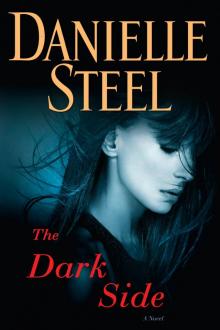 The Dark Side
The Dark Side Blessing in Disguise
Blessing in Disguise The Butler
The Butler Neighbors
Neighbors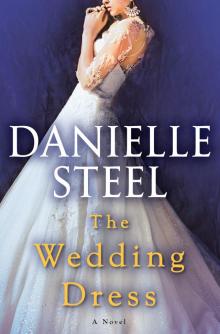 The Wedding Dress
The Wedding Dress The Affair
The Affair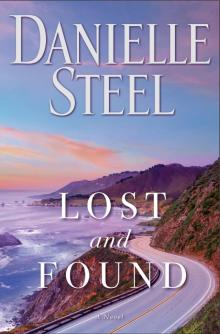 Lost and Found
Lost and Found Child's Play
Child's Play Leap of Faith
Leap of Faith His Bright Light
His Bright Light Mixed Blessings
Mixed Blessings The Numbers Game
The Numbers Game A Gift of Hope: Helping the Homeless
A Gift of Hope: Helping the Homeless Amazing Grace
Amazing Grace Pure Joy
Pure Joy Against All Odds
Against All Odds Sunset in St. Tropez
Sunset in St. Tropez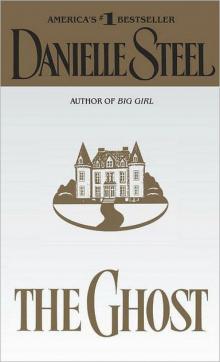 The Ghost
The Ghost Passion's Promise
Passion's Promise Thurston House
Thurston House Matters of the Heart
Matters of the Heart Turning Point
Turning Point Message from Nam
Message from Nam Kaleidoscope
Kaleidoscope The Duchess
The Duchess Past Perfect
Past Perfect The Wedding
The Wedding The Cottage
The Cottage Fall from Grace
Fall from Grace Property of a Noblewoman
Property of a Noblewoman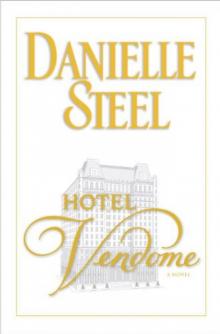 Hotel Vendome (2011)
Hotel Vendome (2011) Toxic Bachelors
Toxic Bachelors Crossings
Crossings Bittersweet
Bittersweet Friends Forever
Friends Forever Family Ties
Family Ties Five Days in Paris
Five Days in Paris The Kiss
The Kiss Daddy
Daddy Vanished
Vanished Safe Harbour
Safe Harbour Rushing Waters
Rushing Waters Miracle
Miracle Palomino
Palomino Now and Forever
Now and Forever Prodigal Son: A Novel
Prodigal Son: A Novel Going Home
Going Home Heartbeat
Heartbeat Ransom
Ransom Fine Things
Fine Things First Sight
First Sight Big Girl: A Novel
Big Girl: A Novel Finding Ashley
Finding Ashley Lone Eagle
Lone Eagle Coming Out
Coming Out Winners
Winners A Good Woman
A Good Woman Dangerous Games
Dangerous Games One Day at a Time
One Day at a Time Dating Game
Dating Game Blue
Blue Granny Dan
Granny Dan The Sins of the Mother
The Sins of the Mother Happy Birthday: A Novel
Happy Birthday: A Novel The Gift
The Gift Summer’s End
Summer’s End The Mistress
The Mistress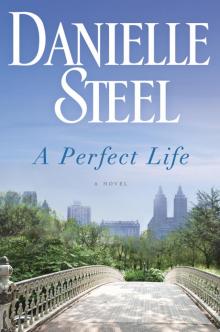 A Perfect Life: A Novel
A Perfect Life: A Novel 44 Charles Street
44 Charles Street Zoya
Zoya Family Album
Family Album Rogue
Rogue Accidental Heroes
Accidental Heroes Malice
Malice Echoes
Echoes Until the End of Time: A Novel
Until the End of Time: A Novel Betrayal
Betrayal Prodigal Son
Prodigal Son Country
Country Hotel Vendome
Hotel Vendome Impossible
Impossible Remembrance
Remembrance H.R.H.
H.R.H. In His Father's Footsteps
In His Father's Footsteps The Right Time
The Right Time Bungalow 2
Bungalow 2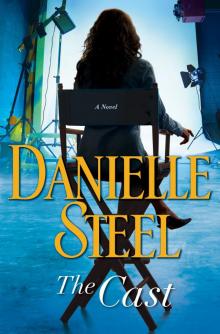 The Cast
The Cast Wings
Wings Southern Lights
Southern Lights Lightning
Lightning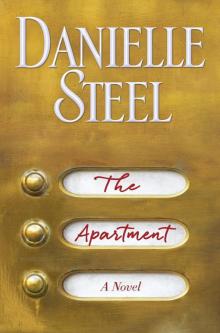 The Apartment
The Apartment Big Girl
Big Girl The House on Hope Street
The House on Hope Street Second Chance
Second Chance Legacy: A Novel
Legacy: A Novel Sisters
Sisters The Ranch
The Ranch Silent Honor
Silent Honor The Good Fight
The Good Fight Betrayal (2012)
Betrayal (2012) Pegasus: A Novel
Pegasus: A Novel